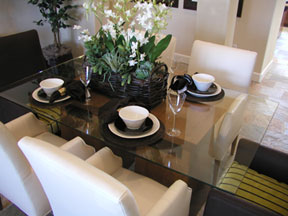 For the past several years, I have been working with people who share my conviction that the same design principles that are used to create award-winning websites, compelling logos, and stunning point-of-purchase displays can and should be used in PowerPoint presentations. This viewpoint isn’t commonly shared; the majority seems to believe that PowerPoint is nothing but a necessary evil that must be suffered through like some kind of horrible rite of initiation. These people are missing out on a powerful design trend: the mainstream acceptance of good design.
For the past several years, I have been working with people who share my conviction that the same design principles that are used to create award-winning websites, compelling logos, and stunning point-of-purchase displays can and should be used in PowerPoint presentations. This viewpoint isn’t commonly shared; the majority seems to believe that PowerPoint is nothing but a necessary evil that must be suffered through like some kind of horrible rite of initiation. These people are missing out on a powerful design trend: the mainstream acceptance of good design.
We are surrounded by increasingly sophisticated designs without necessarily being aware of it. Think about how easy it is to order just about anything under the sun from Amazon.com. Their revolutionary website sets the bar for great user experience. Industrial designer Phillipe Starck’s work for Target changed the way mainstream America believes even such mundane items as dustpans and trash cans should look. When Apple introduced the iMac in 1998, with its translucent case and bold blue accents, it smashed the paradigm that personal computers needed to be housed in beige boxes.
For some reason, this increased design sophistication doesn’t always carry through to a company’s PowerPoint presentations. Tired sales reps and harried admins are still banging out text-heavy, bullet-pointed borefests in much the same way they did in the late eighties when PowerPoint first hit the market. The only difference now is some of the “cool” animation effects and clipart available in PowerPoint 2010. But presentations can be made much more effective with great design. And the public is increasingly demanding great design.
Welcome to the Era of Design proclaims the headline of a recent blog on Forbes.com by Adam Swann, head of strategy at gyro. This article talks about how design is becoming mainstream, affordable, and expected in today’s marketplace.
In an era of design, bad design really stands out as being, well, bad. Today’s innovators stay ahead of their competition by ensuring that great design is carried out in all aspects of their marketing mix.
Your turn
What role does design play in your business?
